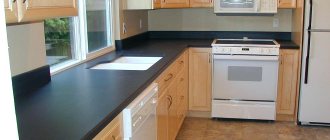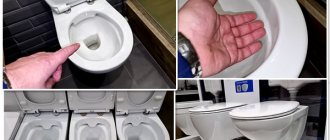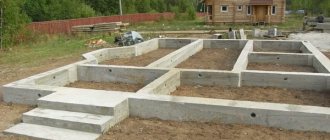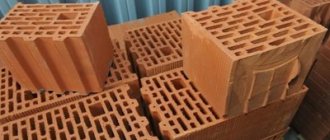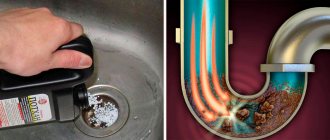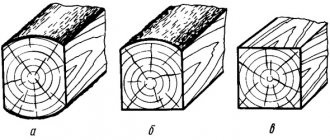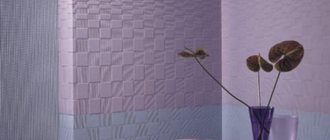In the absence of a shower, choosing a bath is an important task in renovating a bathroom. It can be made of cast iron, steel, natural materials or plastic (acrylic).
In recent decades, plastic bowls have been market leaders, so when choosing, it is recommended to study what acrylic bathtubs are and what advantages they have.
Description of material
The advantages and disadvantages of acrylic are determined by its composition and performance characteristics. The properties of the plastic determine the features of caring for the bowl and its installation on the frame.
Acrylic composition
Acrylic plastic consists of polymerized methacrylate (PMMA). Another name for this material is plexiglass, or plexiglass. During production, additives are added to acrylic monomers, which give the plastic color, opacity and bactericidal properties.
If the bathtub has a composite structure, then its bottom layer consists of acrylonitrile butadiene styrene - ABS plastic.
This material is more impact-resistant and rigid, but has high porosity and is less resistant to pathogenic microorganisms.
Physical characteristics of acrylic
Physical and mechanical characteristics of acrylic and ABS
| Polymer properties | PMMA | ABS |
| Density, g/cc | 1,1-1,2 | 1,02-1,08 |
| Tensile strength, MPa | 40-70 | 35-50 |
| Compression resistance, MPa | 70 | 46-80 |
| Bending strength, MPa | 140 | 50-87 |
| Hardness, HB | 170-180 | 90-150 |
| Thermal conductivity, W/(m×°C) | 0,15-0,2 | 0,12-0,17 |
| Operating temperature, °C | Up to 100 | Up to 75-80 (At 90-105 the plastic begins to soften) |
Due to low thermal conductivity, the bathtub is not cold to the touch and maintains the water temperature for a long time.
Plexiglas belongs to the group of thermoplastics. Unlike thermosets, when heated after polymerization, it does not collapse, but melts and takes on a new shape under pressure. ABS plastic is also a thermoplastic material.
Performance properties
Acrylic bathtubs have the following performance properties:
- Low porosity. The absence of small cavities in the polymer prevents moisture accumulation and mold formation. ABS plastic has a larger number of pores, so it is less resistant to water.
- High ductility and flexibility. This property manifests itself not only during the molding of the bowl, but also during its use. The PMMA layer may bend slightly under the weight of a person. To increase rigidity, acrylic is reinforced with fiberglass or ABS.
- Low impact strength. Plexiglass easily breaks when a heavy object falls, and a metal tip can pierce the wall of the bathtub. To split solid acrylic, a drop of a steel ball (0.8 kg) from a height of 15-20 cm is sufficient; to form a crack on a bowl made of ABS and PMMA, a drop of a load from 1.5-2 m is sufficient.
- Antimicrobial properties. Acrylic contains antibacterial and antifungal additives, so mold and plaque do not form in cracks and scratches. Bowls made from several types of plastic are less hygienic because if the surface is damaged, germs and moisture can enter the pores of the underlying layer.
- Increased friction coefficient. A plastic bowl is less slippery than an enamel bowl. As the product is used, the surface roughness increases.
- Sound absorption. Plastic has good noise-insulating properties, so water procedures, washing and cleaning the bathtub are practically inaudible from behind the bathroom door.
- Maintainability. Regardless of the bowl’s production technology, if it is damaged or worn, it can be restored with liquid acrylic. Baths made of solid PMMA can also be renewed by grinding.
- Instability to the action of aggressive substances. Acids, alkalis, alcohols and solvents damage the structure of polymerized methacrylate. On a light-colored bathtub, traces may remain even from household pigments - hair dye, methylene blue, etc. If the bowl is made of 2 different types of plastic, then chips may form on it from impacts and aggressive cleaning.
High-quality acrylic bathtubs can withstand weights of up to 500 kg.
Safety for the human body
Acrylic polymer is safe for humans. ABS plastic, when exposed to high heat and prolonged use, can release a toxic substance - acrylonitrile.
Toxic substances are released mainly during production, where the process temperature is more than +200°C. If the bathtub is used in accordance with the instructions, the risk of releasing harmful substances into the water is minimal.
Difficulty of care
To prevent damage to acrylic during cleaning, you must follow these rules:
- Wash the bowl with a soft sponge. Even if heavily soiled, do not use abrasive powders, metal scrapers or hard brushes for cleaning. Scratches from sharp objects should be repaired immediately with liquid acrylic, as they will trap dirt and germs.
- Do not use chlorine-containing or ammonia-based products, solvents, acids or alkalis. Active chlorine makes the polymer more porous, and other aggressive substances corrode the surface. Concentrated acids, formaldehyde, acetone, esters, alcohols and chloride hydrocarbons (dichloroethane, etc.) are dangerous for PMMA. To clean the surface, you can only use gels and sprays marked “For acrylic”. Safe folk remedies include soft toothpastes, liquid soap, diluted lemon juice, and a weak solution of soda and vinegar.
- Do not disinfect the polymer surface with boiling water or steam. At high temperatures, the walls of the bath begin to deform. To avoid cracking, water and washing solutions should be cooler than +60…+70°C.
Installation of acrylic bathtubs: is it difficult to install?
Acrylic bowls are mounted on legs, a metal frame or bricks. The load-bearing support consists of several square pipes.
How to install a bathtub on supports:
- Assemble the factory frame. Install the racks on which the sides of the bowl rest. At the bottom they are connected to the supporting structure. If the bathtub is mounted on legs, then this step is skipped.
- Turn the bowl over. Screw the frame or support strips for the legs to the bottom. To install the frame, use self-tapping screws, which are sold complete with the bathtub.
- Attach the racks (legs) to the frame or slats and adjust their height. From the side of the screen, which covers the lower part of the bath, L-shaped washers are screwed onto the legs. They create a stop for the decorative strip.
- Drill holes in the walls, install fasteners for the screen and bathtub.
- Place the sides onto the screwed plates. Adjust the height of the posts on the frame.
- Connect the drain and overflow system, check the connection for leaks. Install screen.
Advantages and disadvantages of acrylic
The advantages of acrylic for bathtubs include:
- hygiene;
- light weight;
- no rust;
- heat and sound insulation properties;
- non-slip surface;
- ease of installation and repair.
The plasticity of plastic during molding allows you to obtain a wide range of shapes and sizes of bathtubs.
The disadvantages of the material are:
- instability to high temperatures;
- difficulty in caring for the surface;
- low impact strength, prone to cracking;
- deflection under load;
- sensitivity to scratches and chips;
- flammability.
Pros of why consumers choose cast iron
- The first and perhaps main reason is durability. The mechanical strength of the material used plus the chemical resistance of the enamel to almost all types of cleaning agents make this choice attractive. If treated with care, a cast iron bathtub will last as long as you want.
- The second reason is that the low thermal conductivity of cast iron and its high heat capacity keep water poured into a cast iron bathtub hot for a long time. Thick walls accumulate the heat of hot water and then gradually release it back, allowing the bather to soak longer.
- The enamel used to coat cast iron is highly durable, smooth, its colors are rich and bright, the enameled surface is shiny and gives the structure an overall elegant look. The absence of pores on the enamel surface makes it easier to remove dirt.
- Another distinctive feature of cast iron bathtubs is their large mass. Even the most modern lightweight models weigh at least 100 kg. This is not always convenient, but such a large weight also has positive aspects - cast iron bathtubs are extremely stable and usually do not require any additional strengthening measures during installation. In addition, thick walls muffle the sounds of flowing water, without requiring additional sound insulation.
Types of acrylic for plumbing
The properties and service life of the bathtub depend on what its walls are made of. The basis for making a bowl can be multilayer plastic, block or cast acrylic.
Block acrylic
Block acrylic is the most reliable and durable. Polymerization of such material occurs directly in the mold.
Before making an acrylic bathtub, a special glass mold is created. A powder compound is poured into it, which consists of PMMA monomers and technological additives. Small particles tightly fill all voids, ensuring uniform density of the product.
After filling the mold, it is closed and placed in an oven, where under the influence of high temperature the compound is fused into a single mass and polymerized.
This technology makes it possible to obtain walls of any shape and thickness. The geometric characteristics of the bath are determined by the shape of the gap between the glasses.
Extruded (multi-layer) material
Extrusion is a technology for squeezing molten or softened polymer through a molding hole (die). To make a multi-layer structure, a sheet of ABS plastic and a thin sheet of acrylic are heated. When pressed through a die, the materials are connected to each other, forming a strong connection.
Extruded plastic is less expensive and more rigid than injection molded plastic, but is less reliable.
Cast acrylic
The latter type of acrylic is produced by continuous casting onto a steel sheet. The resulting workpiece has a uniform thickness and a large margin in size.
It is given the desired shape by hot pressing.
Thick sheets of acrylic have high viscosity when heated. This makes it difficult to form complex radii and bends.
Which material is better
Comparison of the characteristics of different types of acrylic
| Comparison criterion | Blocky | Liteva | Extruded (PMMA + ABS) |
| Acrylic layer thickness | Depends on the distance between the glass walls of the mold, but not less than 5 mm | From 5 mm | 1-4 mm |
| Strength, reliability of the material | High strength, even load distribution | High compressive and bending strength. During molding, thin areas are formed that bear increased load. Detachment of the reinforcing layer is possible. | Low strength. Short service life if the acrylic layer is damaged. |
| Possibility of obtaining baths of complex shapes | You can get a bowl of any shape | Limited | Due to the low viscosity of hot ABS, it is possible to obtain a bath of complex shape |
| Impact resistance | Low | High | |
| Repair and restoration | The use of liquid acrylic, liners and surface grinding is allowed | The bathtub can only be restored by applying polymer or liners, because mechanical processing removes the acrylic layer | |
The cheapest bathtubs are made from extruded acrylic, and the most expensive are made from block acrylic.
The service life depends on the thickness of the acrylic layer:
- at 1-3 mm the recommended service life is 3-5 years;
- at 4 mm - up to 7 years;
- at 5-6.5 mm - up to 10-12 years.
Bowls made of solid acrylic with a thickness of 7-8 mm can last up to 15 years.
Brief summary
The comparative analysis carried out shows that, in principle, the question of how to cover a bathtub, acrylic or enamel, should not arise. The slightly higher cost of acrylic coating (about 800 rubles) pays off with a service life of at least 2 times longer. If the cost of repairs is broken down by year, then an acrylic coating will cost 210 rubles. per year, and enamel - more than 280 rubles.
According to other criteria, enamel loses by an overwhelming advantage. The exception is product care. However, practice has shown that there are many ways to wash acrylic using affordable, yet cheap, products, which you can read about in the article “How to wash an acrylic bathtub.”
Acrylic bathtub manufacturing technology
The manufacturing technology of acrylic bathtubs consists of the following operations:
- Product molding.
- Reinforcement of an acrylic or 2-layer bowl.
- Trimming excess, drilling holes for the drain-overflow system and additional equipment.
- Surface polishing.
- Quality control of the finished product.
Rules of care
When using acrylic bathtubs, the following rules should be observed:
- It is forbidden to use chlorine-containing chemicals intended for the care of ceramics to clean them; acrylic is also resistant to acetone, ammonia, and gasoline.
- For cleaning, acrylic care chemicals are used in the form of pastes and gels, some of them: Sarma, Star-Acrylat, Cif, Acryl-Net, Luxus, Akrilan, New Key, Meteor.
- Do not use the bowl to drain boiling water from the washing machine after washing colored laundry to avoid staining its surface.
- It is not recommended to wash pets in an acrylic bath, whose claws can leave marks on the surface; in extreme cases, you can lay a mat.
- Do not place metal objects with hard and sharp ends (iron buckets, cans) into the bowl, especially when heated. If deep scratches occur, the acrylic surface can be restored by grinding with fine-grained materials and further polishing.
Acrylic care products
Types of acrylic products
The plasticity of acrylic during molding allows you to obtain bathtubs of non-standard configuration. Bowls can have not only rectangular, but also angular, oval, round and asymmetrical shapes.
Rectangular shape
Rectangular bathtubs are easy to install and use. They are installed close to the wall.
Depending on the size of the room, the bowl can rest on 2 or 3 walls.
A rectangular bathtub has the following advantages:
- it can be repaired using an acrylic liner;
- There are full-size and seated configurations;
- the sides are adjacent to the supporting walls;
- the bottom is installed on a simple frame or legs;
- you can make and design the screen yourself;
- It is comfortable to lie down in a rectangular bowl with your legs stretched out.
The disadvantage of this design is that it occupies all the free space near the wall (when supported on 3 side surfaces) or has an acute angle (when supported on 2). In addition, standard bowls do not have built-in shelves.
Corner designs
Corner baths allow you to conveniently organize your space. The recess of the bowl itself can have the shape of an oval or trapezoid with a rounded lower base. In the corner there is a seat, a shelf for bath accessories or equipment for hydromassage.
The advantages of the corner design are:
- space saving;
- possibility to choose the shape of the bowl;
- availability of additional devices and functions.
The disadvantages include:
- high price;
- the difficulty of caring for a bowl with curves and shelves;
- large volume, which increases water consumption.
Bathtubs in the form of an isosceles triangle are suitable only for large rooms. In bathrooms with an area of up to 10 square meters, it is better to install bowls with 1 short and 1 long side.
Round products
Round bathtubs are only suitable for spacious bathrooms. They often have hydro- and aeromassage installed.
The advantages of this design are spaciousness and the ability to install without additional supports.
Disadvantages include high price and cumbersomeness. The diameter of the bath for 1 person is 1.5-1.6 m, and for 2 – from 1.8 m.
Oval baths
An oval bathtub can be suitable for classic, baroque, modern and retro style.
Its advantages are:
- compactness;
- possibility of installation on legs without a screen;
- wide range of sizes.
If the bowl is installed on stands, then it can be freely moved around the room. This is convenient for cleaning and minor repairs.
The disadvantages of oval bathtubs include the lack of functional elements and higher cost than standard rectangular models.
In most cases, it is installed so that at least 15-20 cm remains from the wall.
Asymmetrical designs
Asymmetrical designs allow you to customize your bathroom design.
The most popular forms are:
- trapezoid;
- a drop;
- intersection of 2 circles;
- half of a trapezoid with a rounded outer side.
Only that part of the side on which the shelf for bath accessories is located can be asymmetrical.
Flaws
- Relative fragility - damaged by a strong blow.
- The need for a frame is for stability.
- Ban on boiling water - possible deformation of the body.
- Cleaning problems - does not tolerate powders or alcohol-containing detergents.
- High price.
- Fragility – a weighty object can pierce through the bowl.
- Inhomogeneous layer - scratches can be cleaned out, but this has to be done constantly.
- For installation, you need a frame and fixation to the wall - if it tips over, the bathtub can flood the neighbors or break through the sewer system.
- Boiling water restrictions.
- Rapid loss of appearance.
ABS/PMMA
- Acrylic peels off from plastic.
- The bathtub is leaking where the drain is inserted.
- Repair is difficult.
- You need to attach the board to the wall.
- Small resource – 10-15 years.
- Deformed.
- Loses decorativeness.
- Restoration is expensive.
Quaryl
- High cost - at least 25 thousand rubles.
- A small selection - the only Villeroy&Boch brand.
- Not suitable for budget bathrooms.
- Expensive restoration of the decorative layer.
Acrylic for bathrooms is called “plumbing”, and its composition includes substances that prevent the growth of bacteria. Styrene has a negative effect on the body and causes poisoning. We strongly recommend that you check with sales consultants about its presence/absence in the structure.
Care and operation. The material addresses the question of what an acrylic bathtub is. Pros and cons, customer reviews and design solutions are presented on the pages of the article. In addition, here you will find the following information:
- acrylic as a bath material;
- advantages and disadvantages;
- comparison with cast iron and steel products;
- reviews of popular models.
Comparison of acrylic with other materials
To evaluate the advantages and disadvantages of acrylic, you need to compare it with other materials. Traditionally, cast iron and steel are used to make bathtubs. In non-standard designs, more expensive bases can be used: copper, bronze, wood, artificial and natural stones.
With cast iron
Cast iron bathtubs are heavy and durable. Heat is retained inside the bowl not due to the low thermal conductivity of the metal, but due to the thicker walls and high heat capacity. The weight of the bath reaches 100-120 kg.
The service life of an acrylic bowl is 4-5 times less than that of a cast iron bowl. However, ease of installation, light weight, additional equipment and low price compensate for this disadvantage.
The plastic surface is more sensitive to aggressive chemicals, but does not rust.
With steel
Despite the same density of both alloys, steel products are inferior in weight to cast iron. A standard rectangular bathtub 1.7 m long weighs 30-40 kg, depending on the thickness of the walls.
The metal surface is covered with enamel, which prevents corrosion. When the protective layer is damaged, moisture, fungi and bacteria penetrate into the defect. This causes mold and rust to develop. If the scratch is large, then gradually the enamel around it peels off from the metal.
An acrylic bowl is thicker than a steel bowl, but weighs 2-3 times less. Thin metal does not absorb sound, quickly releases heat and is cold to the touch.
Other options
Plumbing fixtures made from other materials are more expensive, more difficult to maintain and rarely have additional options. The cost of a high-quality wooden bathtub starts from 1 thousand euros, and copper and bronze ones - from 10 thousand.
The advantages of metal and stone bowls are durability, special texture and resistance to high temperatures.
Disadvantages: why cast iron is abandoned
- The first minus is the other side of the plus and is a consequence of the large weight of the cast iron bathtub. Due to the massive structure, considerable difficulties arise during transportation and installation. In addition, for some buildings the additional load acting on the floors must be taken into account. This is especially true for large-volume baths.
- Another disadvantage of cast iron bathtubs is also directly related to their advantages. Enamel, for all its strength and hardness, is a rather fragile material, and in the event of an impact, chips may form on its surface. Such a chip cannot be eliminated with improvised means; it is necessary to call a specialist with special tools, materials and appropriate skills for the restoration of enamel coatings.
- In addition, even with external integrity, over time the upper smooth layer of enamel is destroyed, and the coating acquires a porous, rough structure. Housewives who use products based on oxalic or orthophosphoric acid to maintain cleanliness especially often encounter this problem. Subsequently, the damaged enamel, like a sponge, absorbs iron salts contained in tap water, turning yellow and practically impossible to clean with mild means, so to maintain the whiteness of a bathtub with damaged enamel, you again have to resort to acidic preparations.
- And finally, the third disadvantage of cast iron bathtubs is the conservatism of the form. Cast iron is not malleable enough to allow designers to experiment with fancy configurations. Therefore, the strict classical form of cast iron baths remains unchanged. However, for some, this disadvantage turns into an advantage, because strict classics never go out of fashion.
Recommendations for choosing acrylic bathtubs
When choosing plumbing fixtures, you need to consider a number of factors:
- Bathroom dimensions. The area occupied by the bowl should be no more than 35-40% of the total area of the bathroom. A gap of 2-3 cm is left between the supporting wall and the side. In small bathrooms, sit-down or small-sized bowls 1.5-1.6 m long are installed. When choosing the height and depth of the product, you need to take into account the length of the pipes that are connected to the drain and tap. The difference in size will complicate installation.
- Required functions. Additional shelves, holders and holes for nozzles must not have defects, chips or cracks. When choosing a model with hydromassage, it is important to make sure that the warranty applies not only to the bowl itself, but also to additional equipment.
- Bowl configuration. For small bathrooms, rectangular or corner baths are suitable. In spacious bathrooms with a custom design, you can install a custom-made bowl. Products of complex shape are mounted on a frame with a large number of support points. Lightweight rectangular bowls can be mounted on legs.
- Bathroom design. Laconic white bowls are suitable for small bathrooms. Oval bathtubs with gilded accessories are installed in classical-style rooms, and brightly shaped bathtubs are used for decoration in the Art Nouveau style.
- Type of plastic. The design of the bathtub can be determined visually. When cut through sandwich sheets, 3 layers are visible: reinforcing material, ABS plastic and acrylic. The PMMA surface has a thickness of no more than 0.5-1 mm. Solid acrylic has a 2-layer construction. You can distinguish between block and cast PMMA only by the manufacturer’s description.
- Wall thickness and quality. The bathtub should not have visible damage, areas of uneven coloring and a strong plastic smell. When purchasing, you need to inspect the sides, bottom and drain/overflow holes. The temperature of the tool when drilling acrylic is lower than that required to melt it, so traces of soldering appear on it only when sealing defects. To prevent the bathtub from deforming during operation, its thickness must be at least 6-8 mm.
The dimensions of the layer are determined at the bottom of the bowl. The difference in the thickness of the sides and bottom can be no more than 2 mm.
When purchasing, you need to perform a few simple tests:
- inspect the end of the sides and the drain hole;
- check the bottom for clearance using a laser pointer or flashlight;
- Press firmly on the walls and bottom.
This will make it possible to determine the plasticity of the surface, the heterogeneity of the thickness of the bath and the quality of its execution.
Brand overview
TRITON : Russian company working with Austrian acrylic sheet “SENOSAN” (4 mm thick). Antibacterial coating “ANTIBAK” is used.
- Advantages: ease of cleaning, long-term heat retention and silent filling with water. The models have non-standard sizes, which allows them to be placed in a designer bathroom.
- Disadvantages - wears out quickly, gets scratched. If you accidentally drop pumice on the surface, there is a risk of leaving marks.
Triston
ROCA : a Spanish company specializing in the production of inexpensive and elegant models.
- Advantages – can withstand up to two years of use in its original form. It is very mobile, its small size makes it easy to transport if you move.
- Disadvantages - since the bathtub is covered with an anti-slip coating, the surface appears dirty.
Roca
RADOMIR : Russian manufacturer using premium Austrian acrylic from Senoplast and European fittings.
- Advantages - the bath is stable, its assembly is neat. There are no glue or silicone stains on the seams. The hydromassage engine is installed on rubber shock absorbers, therefore it practically does not vibrate. There is a protective device against power surges.
- Disadvantages - high price.
Radomir
KOLO : Polish company practicing unusual product design. Any bathtubs are on sale: corner, sector-shaped, barrier-free.
- Advantages: Seven-year warranty on all products. The models are designed to meet the needs of different population groups.
- Disadvantages - not noticed.
Kolo
JACOB DELAFON : French manufacturers of elegant bathtubs are successfully experimenting with Flight material.
- Advantages: ease of bathing and mobility. Coating with antibacterial properties.
- Disadvantages - delicate coating, the bathtub quickly becomes covered with scratches.
Jacob Delafon
Design and sizes
Acrylic bathtubs are divided into three types. Longitudinal ones are placed sideways or with the headboard against the wall. Corner - in the corner. Free-standing ones can be placed wherever you want, even in the middle of the bathroom. Please note that round and oval bathtubs take up the most space. Freestanding bathtubs look good in spacious bathrooms.
The height of an ordinary acrylic bathtub is 65-70 centimeters, depth is 50-60 centimeters, length is 150-180 centimeters, width is 70-85 centimeters. Consider the size of the bathroom and your height and weight. Then when using, you will not experience any inconvenience.



